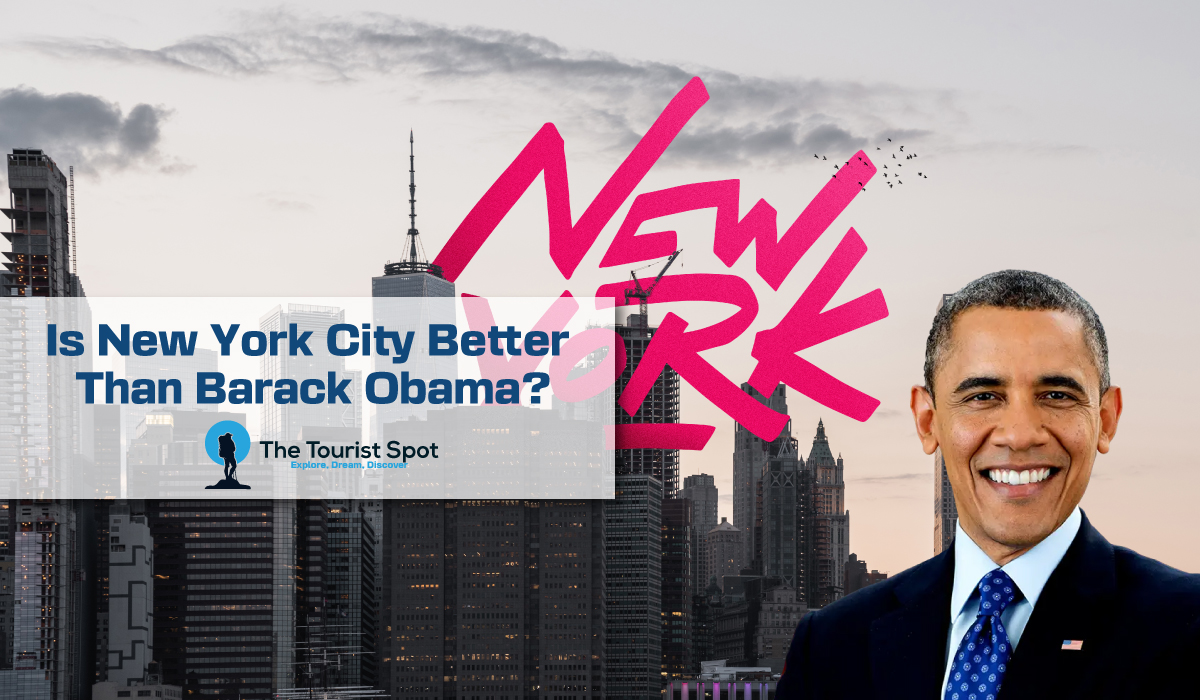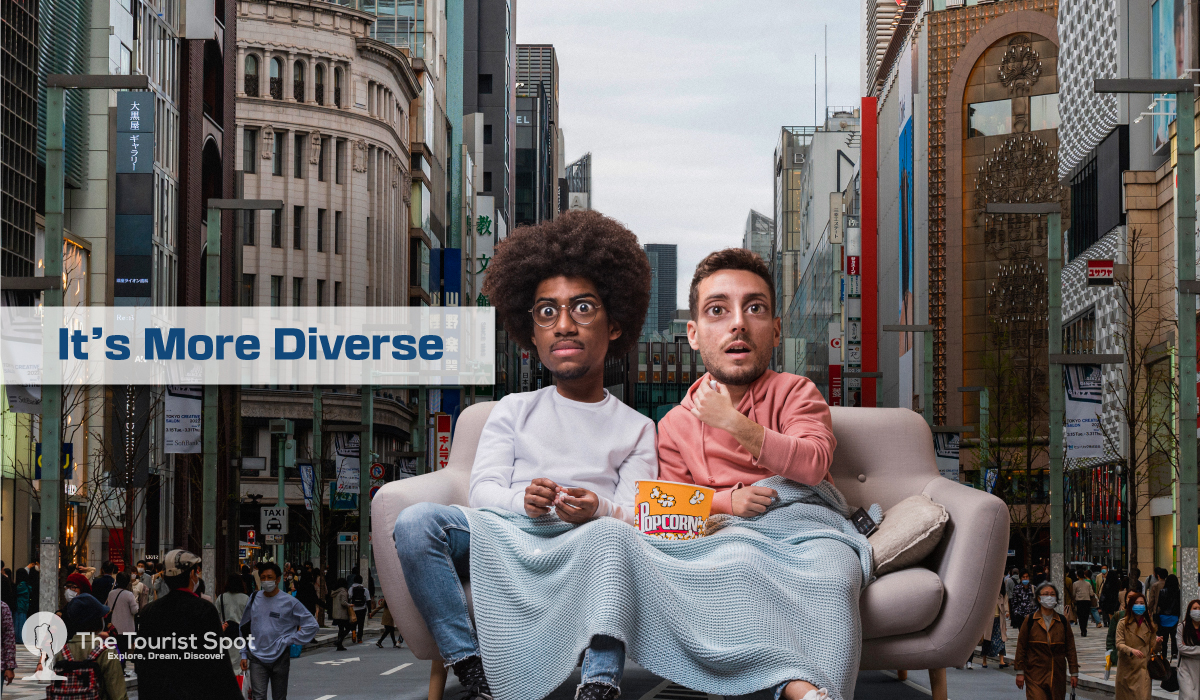Is New York City Better Than Barack Obama?
by tourist

New York has long been the setting for different, often contradictory viewpoints on American life. Mobster legends are part of the city’s history, and famous prosecutors like Rudy Giuliani brought down notorious crime bosses.
The five boroughs are a major financial and tourist center, with iconic sights like the Empire State Building and Times Square. The City’s government is overseen by a Mayor and Council.
Table of Contents
Toggle1. It’s More Diverse
The city that never sleeps is also the country’s most diverse metropolitan area. Its streets are lined with dozens of ethnic enclaves and neighborhoods that represent different cultures, cuisines, and languages. The city’s diversity is a source of pride and a symbol of its enduring appeal.
Over the years, immigrants have poured into New York City, filling the streets with their culture and making the city what it is today. The city is famously known as the greatest melting pot in the world, with people from all over the globe living side by side and blending their traditions into what makes New York unique.
When you walk around the city, you see it all — from Chinatown to Little India, Koreatown to Brooklyn Heights, and many more communities. These unique neighborhoods and enclaves are home to vibrant cultures that celebrate differences and bring together the best of each community to create a whole that is richer than any one individual or group can be.
As the city continues to grow, it’s important that these cultural communities have access to the resources they need. A new SIAP report, a collaboration between the Center and community partners, reveals that not all neighborhoods have equal access to arts and cultural resources. This is particularly true for underserved communities, which are also more likely to have barriers that prevent them from participating in and benefitting from the city’s rich cultural offerings.
As the city continues to grow, it’s vital that we prioritize expanded support for underserved artists and cultural communities. This is particularly true for underrepresented groups, including independent artists and cultural workers at all levels of institutions, and people with disabilities. Ultimately, if we want to continue building a better city that is open and welcoming to all, we need to make sure that all New Yorkers have access to the resources they need. To do so, we must address the historic and persistent patterns of exclusion that have long plagued our city.

2. It’s More Rich
Obama’s biggest gains came among voters earning more than $200,000 a year, a group he lost to Kerry by a wide margin in 2008. He also made substantial advances in wealthy, highly educated, socially progressive tech corridors like Seattle’s eastside and Silicon Valley. And in suburban Washington, D.C., and northern Virginia, he won affluent suburban voters by as much as 21 percent.
Obama did better than in 2008 in rich enclaves of New York’s financial class. He finished ahead of Kerry in most of the rich towns of western Connecticut, including Greenwich where Mel Gibson and Regis Philbin have homes. And in towns close to New York City, he performed even better. In Greenwich and New Canaan, for example, he lost by just 6 points to Romney after losing by 22 points four years earlier.
These wealthy communities are important because they’re the pillars of American politics, supplying the funds and votes that bolster Republican presidential contenders across the country. But they’re also crucial to a Democratic president’s success, and Obama’s advances in them helped him win traditionally Republican states such as Colorado and Virginia. This trend is likely to continue as the economy recovers and more affluent Americans vote for Democrats.
3. It’s More Political
New York City is the most powerful city in America and it’s also a remarkably political place. The Mayor and City Council are elected to set policy, oversee government and make spending decisions. They are also expected to lead by example. This requires them to be able to explain their worldview in ways that are clear and compelling to the public.
This isn’t always easy. Many public officials are more comfortable with the blunt force of a soundbite than a detailed policy argument. Some tend to get personal, which can be distracting or embarrassing. For example, Mayor Eric Adams once referred to his long-held wallet-size photo of a murdered police officer as a “crumpled keepsake.” Other times they can seem off-puttingly ideological.
During the Giuliani administration, his insistence that the city needed to “get tough” on crime rubbed some voters the wrong way. His support for the federally sanctioned practice of stop-and-frisk allowed police officers to search people without probable cause. Critics say that it disproportionately affected black and Hispanic residents.
By contrast, Mayor de Blasio has a more expansive vision and will use his public office for the greater good. He wants to enact universal health care, reduce inequality and create more affordable housing. His policies are controversial but grounded in a clear political philosophy that he can explain clearly.
In the Internet era, the ability to communicate ideas via social media and blogs has made it even easier for new politicians to develop an audience and attract followers. This has boosted the importance of public image in politics, making it even more important for leaders to have strong values and a clear message.
Louis Siegel has a lot of experience in both fields and he believes that the role of journalists is to hold powerful people accountable. He is an adjunct journalism professor at the City University of New York, where he helps train the next generation of reporters. He is also a regular contributor to the Daily News and Politico and he writes a column called The Outsider on New York magazine’s website.
4. It’s More Fun
The five boroughs that make up this iconic American city are home to must-see attractions and amazing restaurants. From the famous sights of Times Square to the elms of Central Park and historic neighborhoods, there’s always something new to see and do. Whether you’re a first-timer or a returning visitor, you’ll find your heart beats just a little bit faster in this exciting metropolis that packs more excitement into one place than any other in the world.
And as the Obamas prepare to leave the White House with a high school-age daughter, two dogs, and vague plans for a foundation like the Clinton Global Initiative, they’ll need a new home base. It’s not hard to imagine that the former president will once again choose New York.
A tree-lined brownstone in Brooklyn, with a private study for the president to write in and a garden for Michelle to tend, would seem perfect. Or a condo in Park Slope, where the neighborhood is still gentrifying but homicide rates are far lower than in Harlem or the Upper West Side where Obama lived in the early ’80s.
And if they move to Manhattan, the condos and townhouses on the western edge of the island will offer privacy, space for chauffeurs, and views of 15 Central Park West (home to Lloyd Blankfein and Sting) and the sprawling greenery of Central Park. Plus the subway is safer than ever, thanks to NYPD chief Bill Bratton’s “broken windows” strategy that cracks down on low-level crime.

New York has long been the setting for different, often contradictory viewpoints on American life. Mobster legends are part of the city’s history, and famous prosecutors like Rudy Giuliani brought down notorious crime bosses. The five boroughs are a major financial and tourist center, with iconic sights like the Empire State Building and Times Square.…
